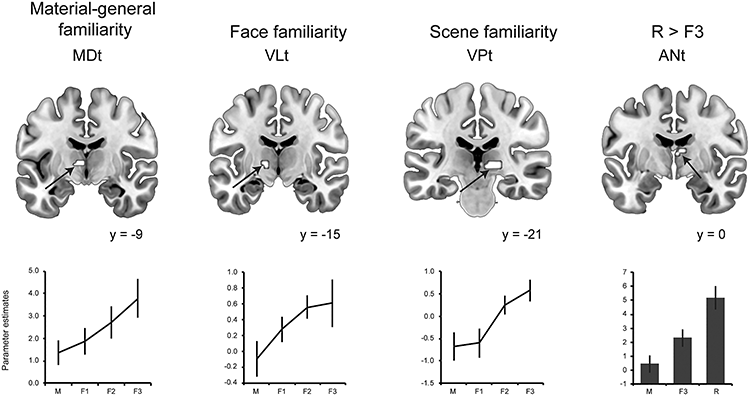
Thalamic-Medial Temporal Lobe Connectivity Underpins Familiarity Memory
Kafkas, A., Mayes, A. R., & Montaldi, D. (2020). Thalamic-Medial Temporal Lobe Connectivity Underpins Familiarity Memory. Cerebral Cortex (in press).
The neural basis of memory is highly distributed, but the thalamus is known to play a particularly critical role. However, exactly how the different thalamic nuclei contribute to different kinds of memory is unclear. Moreover, whether thalamic connectivity with the medial temporal lobe (MTL), arguably the most fundamental memory structure, is critical for memory remains unknown. We explore these questions using an fMRI recognition memory paradigm that taps familiarity and recollection (i.e., the two types of memory that support recognition) for objects, faces, and scenes. We show that the mediodorsal thalamus (MDt) plays a material-general role in familiarity, while the anterior thalamus plays a material-general role in recollection. Material-specific regions were found for scene familiarity (ventral posteromedial and pulvinar thalamic nuclei) and face familiarity (left ventrolateral thalamus). Critically, increased functional connectivity between the MDt and the parahippocampal (PHC) and perirhinal cortices (PRC) of the MTL underpinned increases in reported familiarity confidence. These findings suggest that familiarity signals are generated through the dynamic interaction of functionally connected MTL-thalamic structures.
Read the full article here.






0 Comments